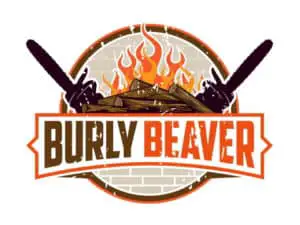
There are TONS of different types of wood out there, and some make better firewood than others.
The right kind of wood will produce hot, long-lasting fires, while others can produce foul smells, toxic smoke, or chimney build-up.
Once you know what to look for, selecting quality firewood actually becomes very straightforward. And in this short guide, we’ll rank 15 of the most common types of wood using 6 standard burn qualities.
This ranking is based on data from university extension offices, in addition to my own experience burning firewood. And by the end of this guide, you’ll know the difference between good, bad, and excellent firewood.
Let’s get started!
Best Firewood Chart (Overview)
| Rank | Species | BTUs | Weight/Cord (lbs) | Quality |
| 1 | Black Locust | 29.3 | 4192 | Excellent |
| 2 | Hickory | 28.5 | 4072 | Excellent |
| 3 | Oak (White) | 26.4 | 3776 | Excellent |
| 4 | Beech | 27.5 | 3760 | Excellent |
| 5 | Ash | 24.2 | 3472 | Excellent |
| 6 | Mulberry | 25.8 | 3712 | Excellent |
| 7 | Black Cherry | 20.4 | 2928 | Good |
| 8 | Maple (Hard) | 23.9 | 3408 | Good |
| 9 | Black Walnut | 22.2 | 3192 | Good |
| 10 | Birch | 20.8 | 2992 | Poor |
| 11 | Sycamore | 24.1 | 2872 | Poor |
| 12 | Maple (Soft) | 19 | 2752 | Poor |
| 13 | Elm | 20 | 2872 | Poor |
| 14 | Aspen | 18.2 | 2160 | Poor |
| 15 | Pine (Southern Yellow) | 22 | 2936 | Poor |
The information in this image is based largely off of data from the following sources: Utah State University Forestry Extension, Oklahoma Cooperative Extension Service, University of Illinois Extension, University of Missouri Extension, South Dakota State University Extension. In addition, where there was missing data (only a few occasions), I’ve used my own experience to round out the data.
The above chart shows the ranking, BTU output, weight, and quality tier of 15 common firewood species’.
This will allow you to get a quick at-a-glance view, of the best types of firewood you can burn.
As a note, this specific group of 15 was selected because they are among the most common firewood species’ in the USA. Since there are so many types of wood, this is not a comprehensive list.
Next, we’ll take a look at each of these 15 types of firewood in more detail, to better understand why they rank where they do.
Best to Worst Firewood
As a quick note, the below ranking gives preference to fuel woods that work great in fireplaces or wood stoves. Some types of wood (like Pine), are poor fuel woods, but still nice for recreational campfires.
Also, keep in mind that the below information is based on a combination of the data from the university extension offices (links under the chart above) and my own personal experience.
Alright, with that said, let’s jump in!
1. Black Locust
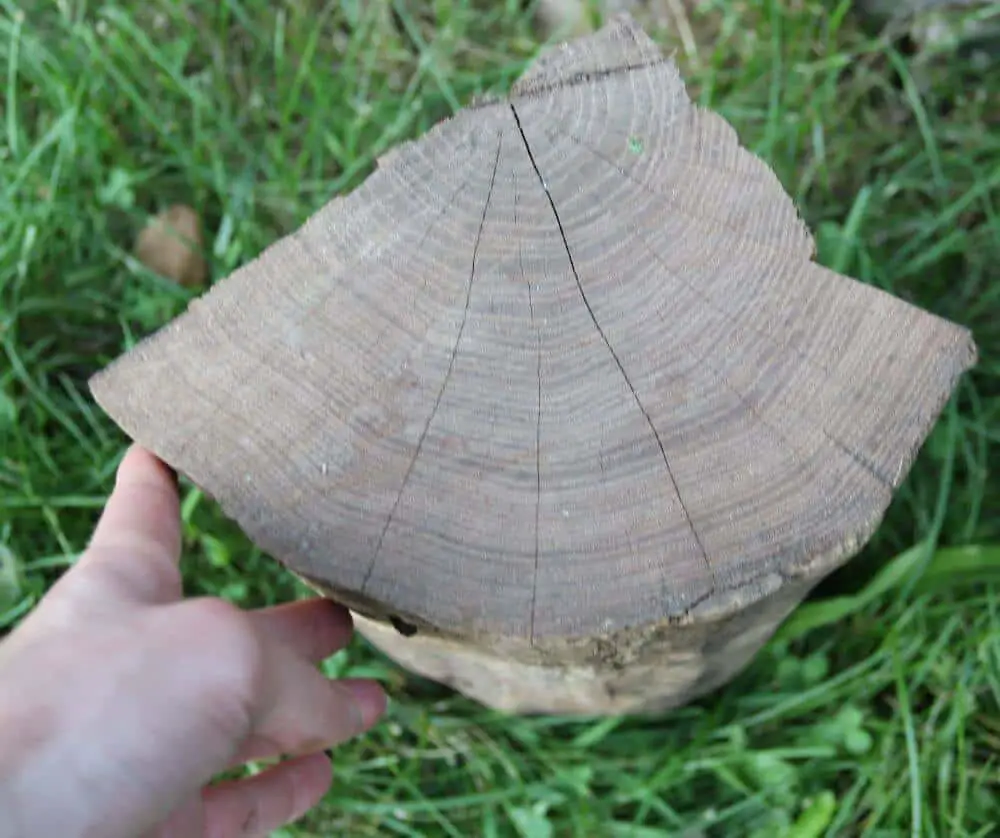
Overview
Black Locust is arguably THE best type of firewood you can burn for heating. It has an exceptional heat output. In addition, Black Locust produces minimal smoke and high-quality coals capable of burning through the night.
Standard Burn Qualities
- Heat Output (BTUs): 29.3
- Amount of Smoke: Low
- Spark Output: Medium
- Smell or Fragrance: Slight
- Coaling Quality: Excellent
- Overall Quality Rating: Excellent
Other Things to Note:
Black Locust is more difficult to split compared with some of the other top-level firewoods like Oak and Ash. And although Black Locust has the highest heat output on our list, Osage-Orange and certain species’ of Oak technically have a higher heat output. Osage-Orange is not included, because it is not as common in this region.
2. Hickory
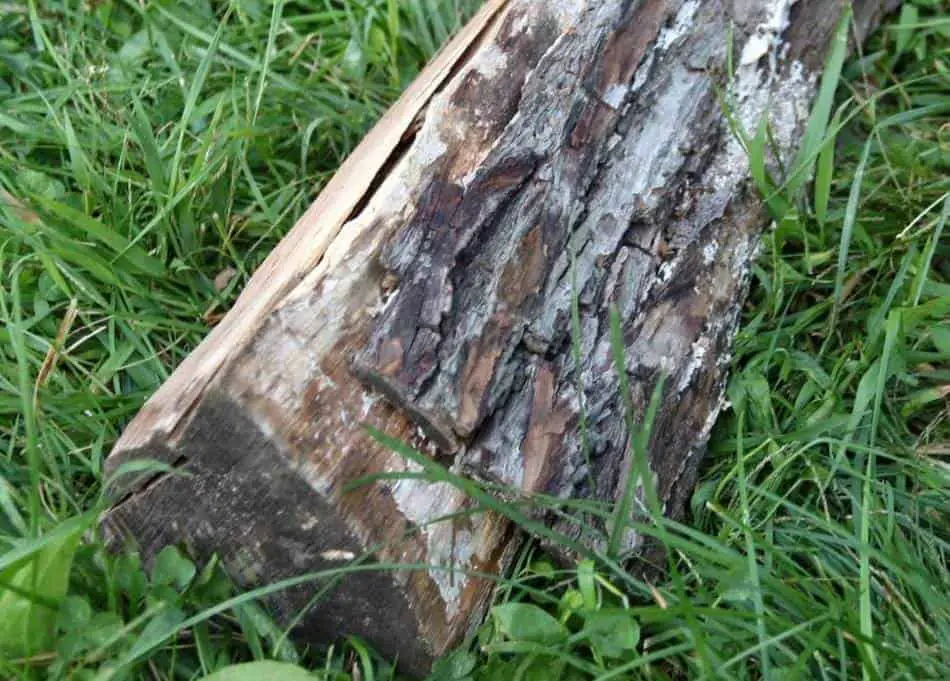
Overview
Hickory is one of the very best types of firewood, especially for heating. It has an exceptional heat output. In addition, Hickory produces minimal smoke and high-quality coals that can burn through the night. Hickory firewood is also a popular choice for BBQ and smoking meats.
Standard Burn Qualities
- Heat Output (BTUs): 28.5
- Amount of Smoke: Low
- Spark Output: Medium
- Smell or Fragrance: Excellent
- Coaling Quality: Excellent
- Overall Quality Rating: Excellent
Other Things to Note:
If you’ve ever cooked with “liquid smoke”, it’s actually made from condensed Hickory smoke. Hickory produces the quintessential “smoke smell”. Most people don’t know this, but Hickory also happens to be one of the species of trees that you can tap for syrup.
3. Oak
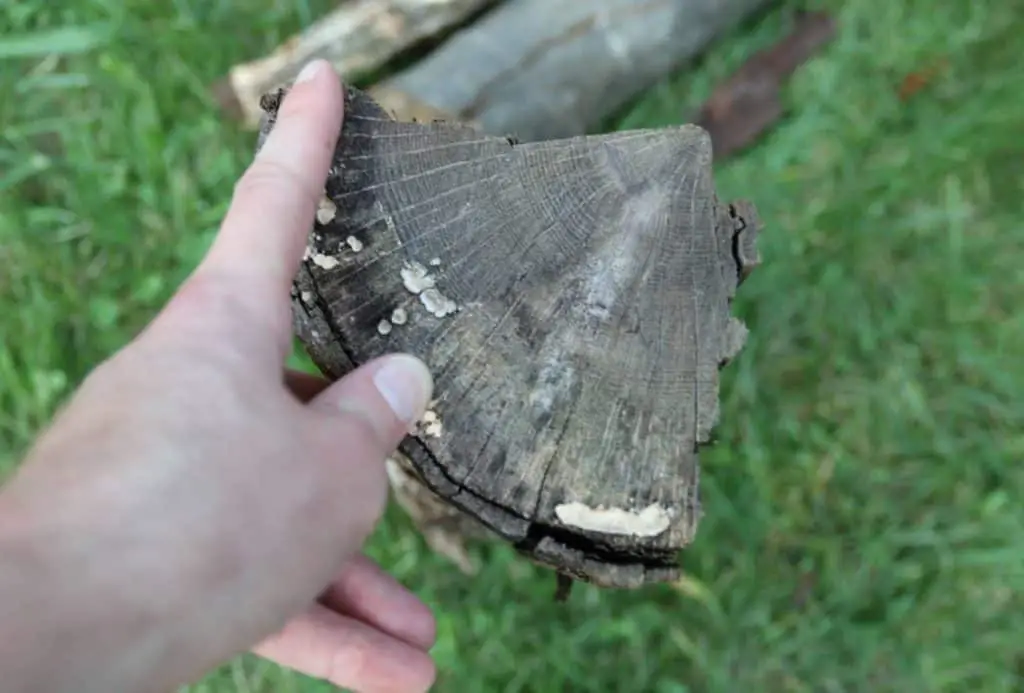
Overview
Oak firewood is absolutely one of the best types of firewood you can burn. It has a high heat output. In addition, Oak produces minimal smoke, does not spark significantly, creates excellent coals, and is easy to split when dry.
Standard Burn Qualities
- Heat Output (BTUs): 26.4
- Amount of Smoke: Low
- Spark Output: Low
- Smell or Fragrance: Slight
- Coaling Quality: Excellent
- Overall Quality Rating: Excellent
Other Things to Note:
Note that the above ratings are based on White Oak. For other varieties of Oak, these qualities would vary. And in some cases, the heat output of Oak can be even higher than Black Locust. Oak is also commonly used for woodworking and is one of the best all-around woods.
4. Beech
Overview
Beech firewood is another top-tier firewood. It has a high heat output, very close to that of Oak. In addition, Beech produces minimal smoke, does not spark significantly, and creates excellent coals. However, Beech is one of the most difficult types of firewood to split.
Standard Burn Qualities
- Heat Output (BTUs): 27.5
- Amount of Smoke: Low
- Spark Output: Low
- Smell or Fragrance: Good
- Coaling Quality: Excellent
- Overall Quality Rating: Excellent
Other Things to Note:
Beech is extremely difficult to split, harder than Black Locust, Hickory or Oak. But otherwise, Beech is great in pretty much every category.
5. Ash
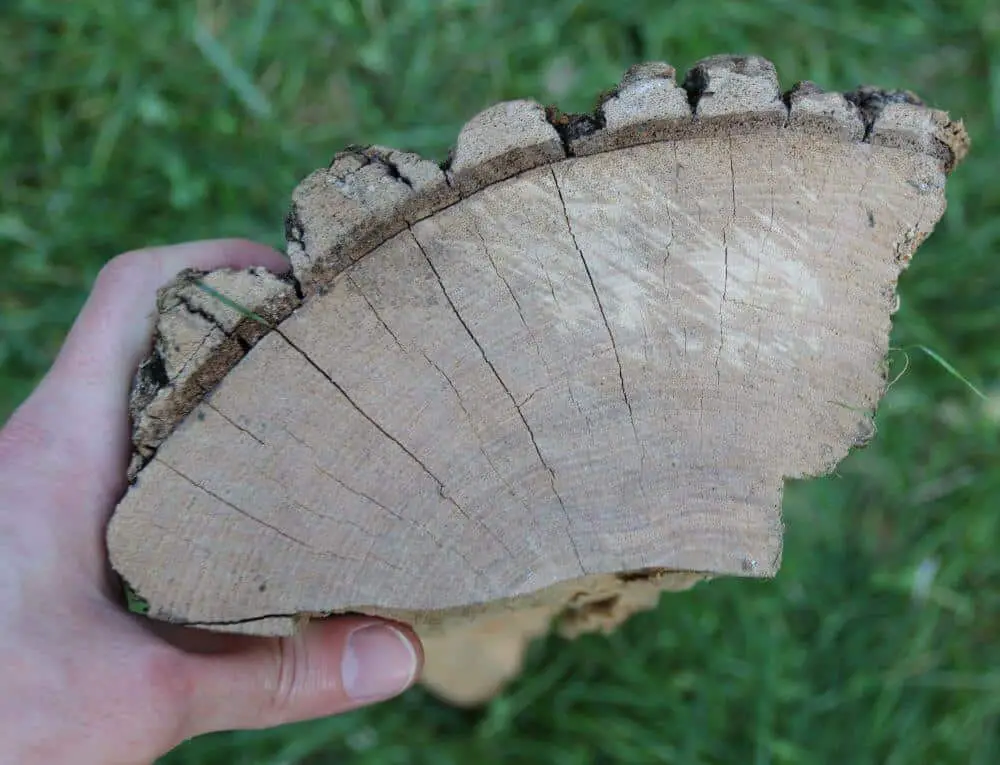
Overview
Ash firewood is among the best types of firewood you can burn. It has a high heat output. In addition, Ash produces minimal smoke, good quality coals, and is not too difficult to split when dry.
Standard Burn Qualities
- Heat Output (BTUs): 24.2
- Amount of Smoke: Medium
- Spark Output: Low
- Smell or Fragrance: Slight
- Coaling Quality: Good
- Overall Quality Rating: Excellent
Other Things to Note:
Compared to other top firewood choices, Ash can be easier to start fires with, and it produces fewer sparks than Black Locust, Hickory and Mulberry. On the other hand, Ash doesn’t burn as hot or produce coals as good as other top firewood types.
6. Mulberry
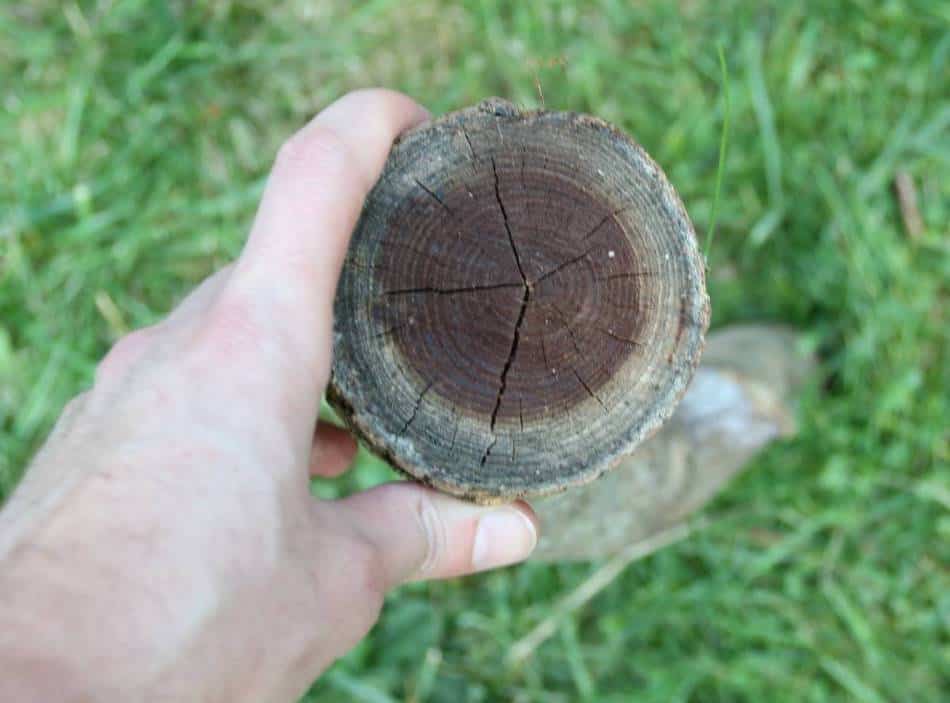
Overview
Mulberry is excellent firewood with a high heat output. In addition, Mulberry smells nice and produces great coals. The biggest issue with Mulberry firewood is that it produces heavy sparks. So it’s not a good choice for indoor open-air fireplaces.
Standard Burn Qualities
- Heat Output (BTUs): 25.8
- Amount of Smoke: Medium
- Spark Output: High
- Smell or Fragrance: Good
- Coaling Quality: Excellent
- Overall Quality Rating: Excellent
Other Things to Note:
The biggest downside of Mulberry is that it produces heavy sparks. This is the main reason why it ranks below Ash, which has a lower heat output than Mulberry. If sparks are not an issue for you (for example, if you will only burn it in a sealed wood stove), then Mulberry is an excellent choice.
7. Cherry
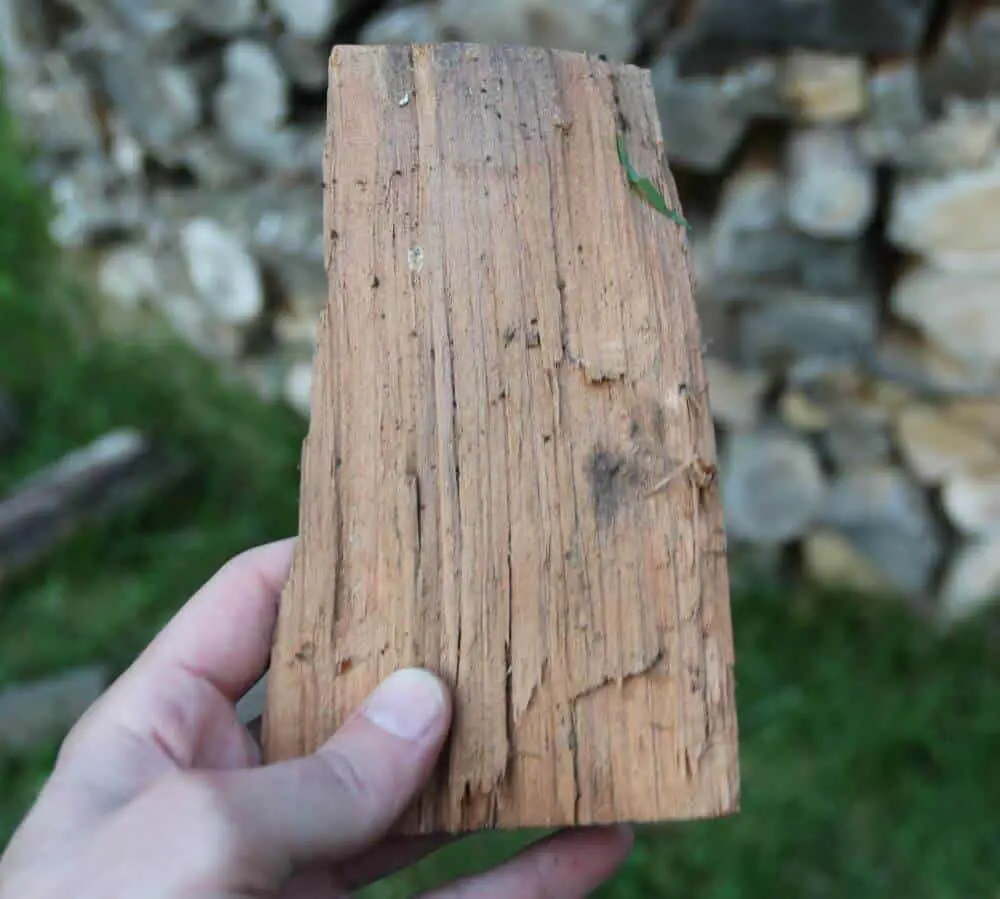
Overview
Cherry is moderately good firewood. Cherry firewood is best known for the pleasant aroma it produces when burned. However, Cherry has a relatively low heat output and is not as good for heating compared to heavier woods like Hickory and Oak.
Standard Burn Qualities
- Heat Output (BTUs): 20.4
- Amount of Smoke: Low
- Spark Output: Low
- Smell or Fragrance: Excellent
- Coaling Quality: Excellent
- Overall Quality Rating: Good
Other Things to Note:
Most people will agree that Cherry firewood has one of (if not the #1) best smells. It’s great for campfires and is also used for BBQ and smoking meat. Cherry is also a very easy wood to work with, whether you’re just splitting it, or doing some serious woodworking.
8. Hard Maple
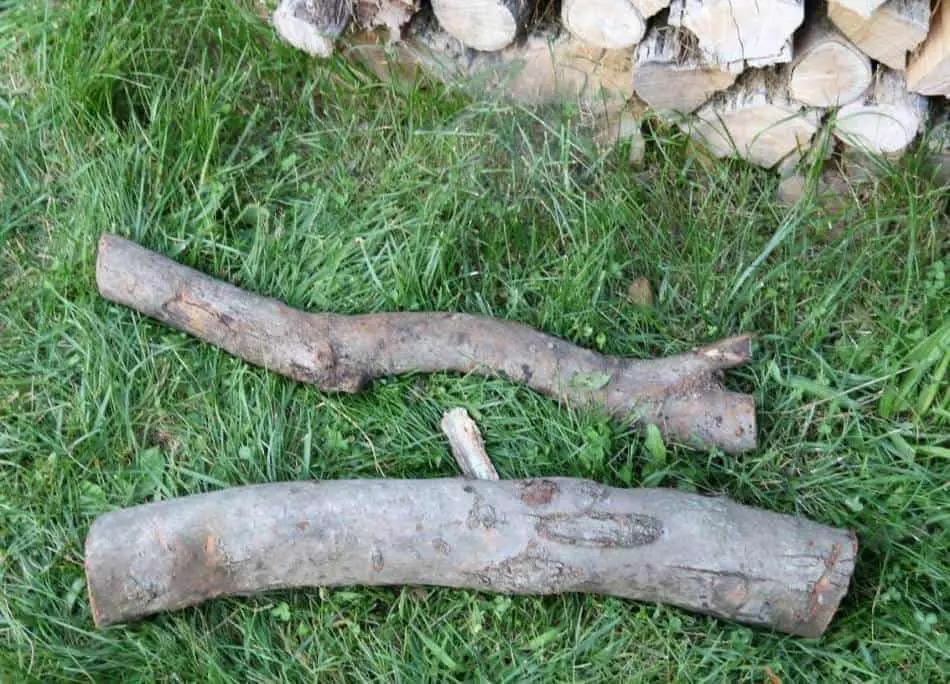
Overview
All species’ of Maple fall in into two broad categories: Hard Maple and Soft Maple. Hard Maple is moderately good firewood, with a moderate heat output, a nice smell, and high-quality coals. However, Hard Maple also produces a lot of smoke. An example of Hard Maple, would be Sugar Maple.
Standard Burn Qualities
- Heat Output (BTUs): 23.9
- Amount of Smoke: High
- Spark Output: Low
- Smell or Fragrance: Good
- Coaling Quality: Very Good
- Overall Quality Rating: Good
Other Things to Note:
If you’re building an outdoor campfire, Hard Maple may not be the best choice for you, because it produces a lot of smoke. However, Hard Maple is a pretty common type of wood (at least in this region), and it’s still a better heat producer than Pine, Aspen, etc.
9. Black Walnut
Overview
Black Walnut firewood is middle-tier firewood. It has moderate heat output, a nice smell, and it produces decent coals. However, you’ll probably only want to burn Black Walnut from dead or severely damaged trees, because the wood is quite valuable when in good condition.
Standard Burn Qualities
- Heat Output (BTUs): 22.2
- Amount of Smoke: Low
- Spark Output: Low
- Smell or Fragrance: Good
- Coaling Quality: Good
- Overall Quality Rating: Good
Other Things to Note:
Black Walnut is the most expensive North American hardwood, and it’s prized for woodworking. As a result, it is not common to use Black Walnut as firewood. However, Black Walnut is a fairly common tree in certain parts of the USA, so it is still used as firewood from time-to-time.
10. Birch
Overview
Birch firewood is not very good firewood, but it’s not the worst either. In other words, it’s solidly in the bottom tier for firewood quality, but it still outperforms other types that come later in this list. Birch has low heat output, decent coals, and produces a moderate level of smoke.
Standard Burn Qualities
- Heat Output (BTUs): 20.8
- Amount of Smoke: Medium
- Spark Output: Low
- Smell or Fragrance: Slight
- Coaling Quality: Good
- Overall Quality Rating: Poor
Other Things to Note:
Although Birch is rated above as “poor” quality firewood, this really just means it’s “okay”. If you have the option to burn any of the top 6 types of firewood above, those will be better choices. However, if you happen to have a lot of Birch available, you can still use it as a supplement when there are moderate temperatures (e.g. in the Spring/Fall).
11. Sycamore
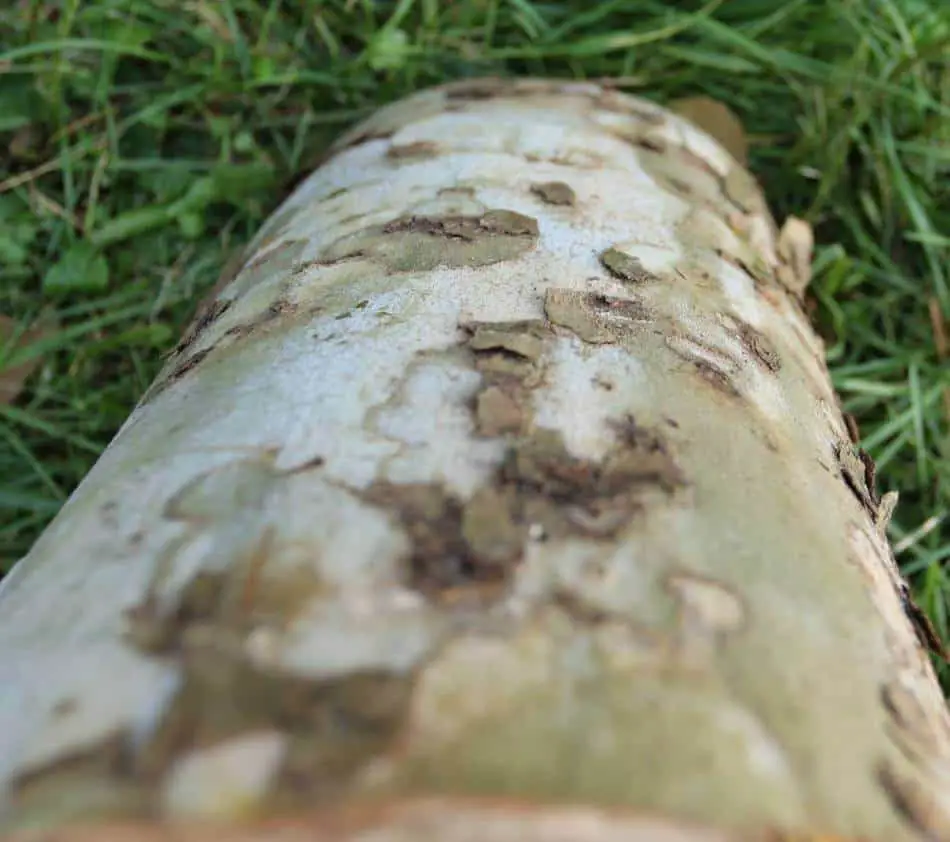
Overview
Sycamore is relatively poor firewood. Even though it is a hardwood, it is not as strong of a heat producer compared to denser hardwoods like Hickory and Oak. Sycamore can also be quite difficult to split and it produces a moderate level of smoke. With that said, it can still be helpful to burn if it’s more readily available then other types of wood.
Standard Burn Qualities
- Heat Output (BTUs): 24.1
- Amount of Smoke: Medium
- Spark Output: Low
- Smell or Fragrance: Slight
- Coaling Quality: Good
- Overall Quality Rating: Poor
Other Things to Note:
Sycamore is among the easiest types of firewood to identify. It has a very unique light flaky bark with a whitish-green layer underneath that almost makes the tree look naked. See the photo above for reference. Sycamore is also very difficult to split, even compared to much heavier wood like Oak.
12. Maple (Soft)

Overview
All species’ of Maple fall in into two broad categories: Hard Maple and Soft Maple. Soft Maple firewood is okay, but not as good as the higher-ranked types of firewood on this list. Soft Maple has low heat output, a nice smell, and produces great coals. An example of Soft Maple would be Silver Maple.
Standard Burn Qualities
- Heat Output (BTUs): 19
- Amount of Smoke: Low
- Spark Output: Low
- Smell or Fragrance: Good
- Coaling Quality: Excellent
- Overall Quality Rating: Poor
Other Things to Note:
Two ways you can distinguish Soft Maple from Hard Maple, is using the weight and the smoke output. Hard Maple is considerably heavier than Soft Maple, given two pieces of wood of the same size. Hard Maple also produces far more smoke than Soft Maple does.
13. Elm
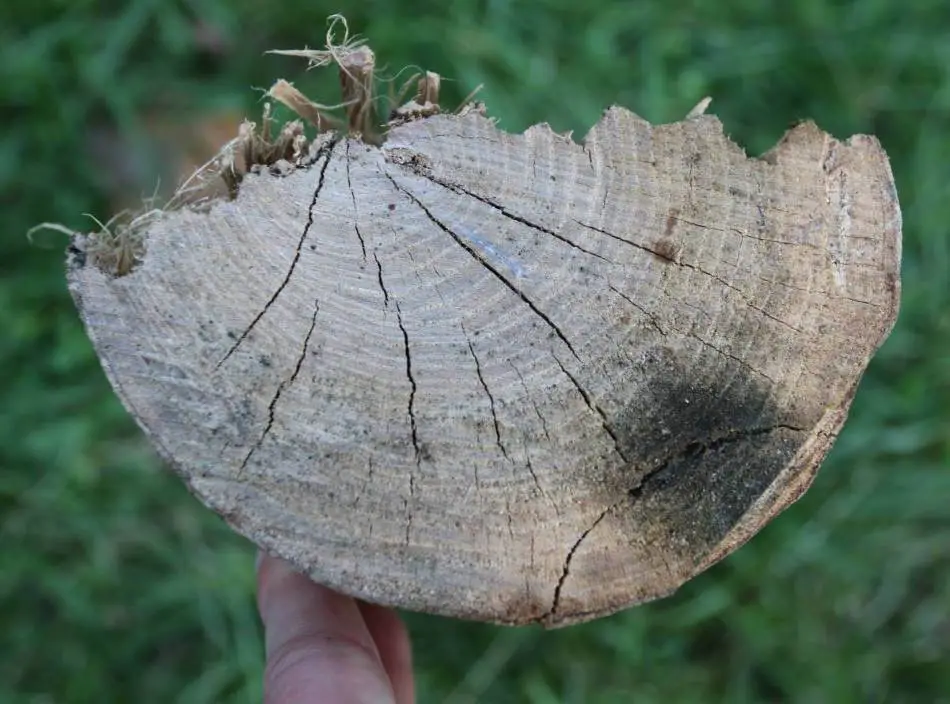
Overview
Elm is relatively poor firewood. It has a very low heat output, it’s extremely difficult to split, and it produces a moderate level of smoke. In addition, depending on where it grows, Elm can produce bad odors.
Standard Burn Qualities
- Heat Output (BTUs): 20
- Amount of Smoke: Medium
- Spark Output: Low
- Smell or Fragrance: Good (unless it’s growing near something smelly)
- Coaling Quality: Excellent
- Overall Quality Rating: Poor
Other Things to Note:
There are two downsides of Elm that are pretty unique. First, the fibers of the wood are very stringy. As a result, the wood clings tightly to itself, making it one of the most difficult woods to split. Second, Elm has a habit of absorbing the scent of whatever it’s growing on/around. So if your Elm tree grew near a smelly swamp or a sewage line, it’s going to smell pretty awful.
14. Aspen
Overview
Aspen firewood is frankly one of the worst woods for firewood for indoor and outdoor fires. It has a high very low heat output, and it produces a moderate amount of smoke. Aspen trees are very common, so some people may still use it as firewood, but given an alternative, almost any other type of wood is better.
Standard Burn Qualities
- Heat Output (BTUs): 18.2
- Amount of Smoke: Medium
- Spark Output: Low
- Smell or Fragrance: Slight
- Coaling Quality: Good
- Overall Quality Rating: Poor
Other Things to Note:
Aspen has a light white wood, and it’s commonly used to make paper and other simple wood products.
15. Pine

Overview
You may be surprised to see Pine at the bottom of the list. Pine is among the worst types of firewood for functional uses (e.g. heating with a wood stove). However, Pine is good firewood for recreational outdoor campfires, because it produces a nice-smelling fire that doesn’t burn too long.
Standard Burn Qualities
- Heat Output (BTUs): 22
- Amount of Smoke: High
- Spark Output: Low
- Smell or Fragrance: Good
- Coaling Quality: Poor
- Overall Quality Rating: Poor
Other Things to Note:
Pine is an extremely sappy wood and can contribute significantly to creosote build-up, which can cause chimney fires. Also note: the above numbers are based on Southern Yellow Pine. For other types of Pine, these numbers can vary. For example, the heat output of White Pine is only 15.9.
5 Standard Firewood Burn Qualities

In this section, I’ll explain the standard burn qualities that were used to inform the rankings of the different firewood types above.
Each of the 5 qualities below are commonly used as measures of firewood quality. You can find a great example of this from the Utah State University Forestry Extension office, here. Now let’s dive in!
1. Heat Output (BTUs)
For firewood, the official measure for heat output is million BTUs per cord of seasoned wood. That’s the unit used for all heat numbers in this article.
Generally speaking, anything 25+ is very hot burning firewood. And anything around 20 (or less) would be quite low heat output for firewood.
Heat output is an important characteristic for firewood, especially if you are using it to heat your home, but it’s not the only thing you need to consider.
Let’s cover smoke output next.
2. Amount of Smoke
Smoke production is an important factor for outdoor campfires, and it is also something to think about for indoor fires. Nobody wants to smoke themselves out 🙂
Low smoke production is a common trait among our top tier firewoods, like Ash, Black Locust, and Oak. However, Mulberry, which is otherwise top-level firewood, does produce a moderate amount of smoke.
It’s also worth mentioning, that almost any type of wood will be VERY smokey if you burn it wet. You should always make sure your firewood is properly seasoned (dried) before you burn it.
You can learn more about seasoing firewood in this article.
3. Spark Output
Some types of firewood pop or spark really badly, which may not seem like an issue at first, but it can actually be a big problem.
Wood that sparks heavily can create significant fire hazards, which can cause problems in both open-air (e.g. outdoor) and enclosed fireplaces.
Knowing the spark production level of your firewood is a helpful step, and it’s always a good idea to monitor open-air fires, even if it’s not expected to spark a lot.
4. Smell or Fragrance
Some types of firewood are famous for having a nice fragrance. Cherry and Hickory are both great examples of this.
Since smell is so closely associated with flavor, fragrant woods are also sometimes used for BBQ and smoking meats.
On the other hand, a really bad smelling firewood (e.g. Elm, Buckeye, etc.) can really give you a bad day.
If you want to have the best smelling campfire of your life, you should definitely check out our article on the 11 best smelling types of firewood. That article also mentions 4 types of firewood that smell particularly bad.
5. Coaling Quality
Another factor that is commonly used for rating firewood is “coaling”. When any kind of firewood burns it produces coals, and the quality of the coals produced have a big impact on how long (and how well) the fire will continue burning.
For example, wood that has great coaling properties will work well as an overnight fuel in wood stoves, because the quality coals will help the fire stay hot through the night.
These long-lasting coals will also allow you to easily re-start a fire in the morning by simply adding more wood to the existing embers.
Related Questions
What Type of Firewood Burns Longest?
The five longest-burning types of firewood in America are Osage Orange, Dogwood, Black Locust, Hickory, and Apple. When all conditions are equal, such as the moisture content and volume, the heaviest wood will typically burn the longest. And the five wood species’ mentioned above, are the densest in America.
What Type of Wood Burns Hottest?
Osage-Orange is the hottest burning type of wood, with a heat output rated at 32.9 million BTUs per cord of seasoned firewood. It is closely followed by Black Locust, Hickory, and Oak, all of which have exceptionally high heat output.
Does Wet Wood Burn Hotter?
Wet wood does not burn hotter than dry wood, it is also less efficient because energy has to be used to evaporate the remaining moisture. Wet wood also produces more smoke than seasoned firewood, and this can contribute to pollution and chimney build-up.
